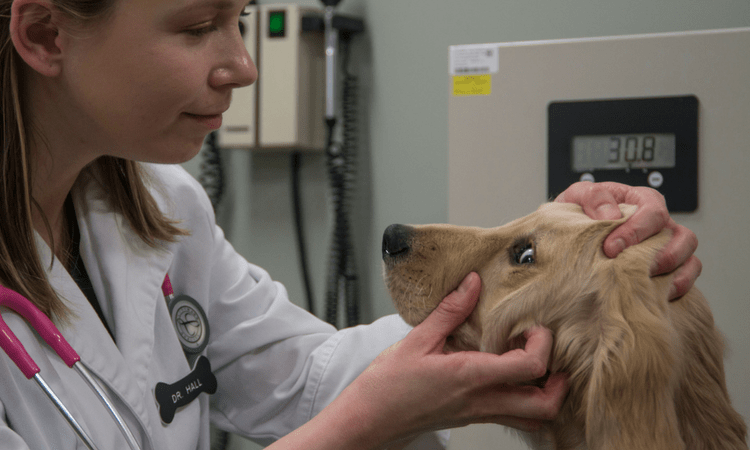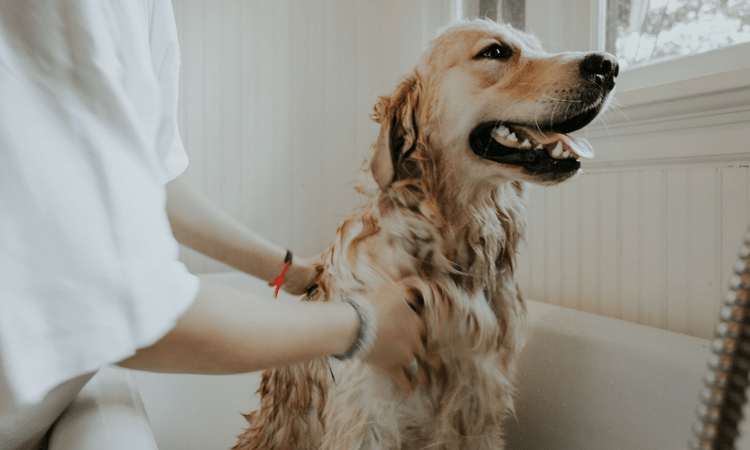Alabama Rot has been making headlines again in recent weeks. This nasty disease has infected 30 dogs since the beginning of 2018, leading to renewed calls for dog owners to be vigilant, especially in urban areas. It’s important to remember that this disease, although potentially deadly for dogs, is very rare and has only infected a very small percentage of the UK dog population.
What is Alabama dog rot?
Alabama Rot is a mysterious dog disease that damages blood vessels in the skin and kidneys. The condition was first identified in Alabama in the 1980s, but in the last few years has been making headlines throughout the UK as the number of confirmed cases increases. Even though it was first identified amongst Greyhounds, any dog regardless of their breed, age or sex can fall victim to Alabama Rot.
The official term for Alabama Rot is Idiopathic Cutaneous and Renal Glomerular Vasculopathy, or CRGV for short. To help us understand the formal title, here’s what each of those medical words mean:
- Idiopathic: vets don’t know the exact cause of this disease
- Cutaneous: symptoms include skin issues
- Renal: the kidneys are also affected
- Glomerular: refers to the part of the kidneys where the blood is filtered and cleaned
- Vasculopathy: this disease affects the blood vessels
What causes Alabama Rot – is it contagious?

The actual cause of Alabama Rot is unknown and it’s currently thought that dogs can contract the disease by coming into direct or indirect contact with other infected dogs. Veterinary professionals believe that dogs can pick up the disease on their paws and legs after going for walks in very muddy areas. The disease can affect dogs of all ages and breeds and, in serious cases, can lead to sudden kidney failure and death.
What are the Alabama Rot symptoms to watch out for?
It can be hard to identify the presence of Alabama Rot on your dog. But the most important thing as a dog owner is to understand what to look out for, as time plays a key part in successful treatment. Here are the Alabama Rot symptoms to watch out for:
- Skin sores – these may appear as lesions (sores, bumps, lumps, open wounds or ulcers on the skin). Keep an eye out for your dog paying extra attention to a particular part of their body, or licking wounds which you know haven’t been caused by a physical injury.
- Check knees & elbows – skin sores caused by Alabama Rot are most commonly found around the knees and elbows, but also on the stomach or face.
- Reduced appetite & vomiting – Anywhere between two and seven days after the appearance of skin sores, your dog will usually experience reduced appetite, tiredness, and vomiting. These are the visible signs that your dog is experiencing kidney failure.
In recorded cases of Alabama Rot, skin sores will usually be the first signs, followed by signs of kidney failure between two to seven days later. Vets are urging dog owners whose pets have been near areas where the disease has been confirmed to stay vigilant. Make sure you wash your dog thoroughly after muddy walks and use the bath or shower rinse as an opportunity to inspect their legs, stomach and face.
Even if you dog experiences all of these symptoms, it doesn’t necessarily mean they’ve caught Alabama Rot – so don’t panic. The best thing to do is consult your vet as early as possible after identifying any of the above signs, so they can run tests to determine the cause.
How is Alabama Rot treated

The first thing your vet would want to do is run a few checks and tests, ruling out any other known diseases or health problems. Your vet will inspect any skin sores on your dog’s body and would ask you some questions to figure out what might have caused them.
Your dog may need to undergo a few more tests, including blood and urine tests to help your vet find out how well your pooch’s kidneys are functioning. In some cases, these tests may need to be repeated after a day or two, to see if there’s been any change for the better or worse.
Veterinary treatment for Alabama Rot is intensive and needs to be started as early as possible to give a dog their best fighting chance. Dogs who’ve received timely treatment have survived but it has also claimed the lives of several dogs.
Alabama Rot UK locations
How many cases of Alabama Rot have been recorded in the UK?
At the time of publication, only 30 cases have been confirmed in 2018 in the United Kingdom. The first confirmed case of Alabama Rot in the UK was back in 2012 – since then, 153 dogs have been diagnosed with the disease.
Alabama Rot was first record in Alabama, USA – which is where it got its name. At first, veterinary experts believed that it was a disease that only affected Greyhounds, since all the recording cases in North America were in this breed, but since then it has been clear that the disease does not discriminate when it comes to breed.
Where have the most recent cases of Alabama Rot in the UK been reported?
Even though the cause of Alabama Rot is unknown, it’s suspected that it spreads from muddy, wooded areas and in areas with high levels of stagnant water. The most recent cases of Alabama Rot have been identified in:
- Lincoln (Lincolnshire)
- Axminster and Plymouth (Devon)
- Worthing (West Sussex)
- Tooting and Dulwich (London)
- Little Hulton and Sale (Greater Manchester)
- Long Eaton (Nottinghamshire)
- Hayle (Cornwall)
Alabama Rot Map – Confirmed UK Cases, 2018
This brings the total number of confirmed cases to 153 since 2012, with 30 cases in 2018. You can check your local area on the Vets4Pets dedicated page with information about Alabama Rot.
What are the best methods of Alabama rot prevention?

Since the cause of the disease is still unknown, there’s no clear way to prevent our dogs from getting it. But here are a few tips to help you minimise the risks:
- Keep your dog away from very muddy areas
- If you do take your dog for a muddy walk, wash them off as soon as possible
- Give your dog a check-over once a day for lumps and bumps. Keep an eye out for the Alabama rot symptoms listed above
- If you’re ever in doubt, contact your vet immediately
How you can help fight Alabama Rot
Since Alabama Rot causes are still largely unknown, there are things you can do to help fight the disease, aside from staying vigilant and keeping woodland mud off your dog.
Why not considering lending your voice to a petition aimed at DEFRA (the UK government Department for Environment, Food & Rural Affairs) which has been calling for DEFRA to fund research into the cause of Alabama Rot (CRGV) in dogs. If it reaches over 100,000 signatures this petition will be considered for debate in Parliament.